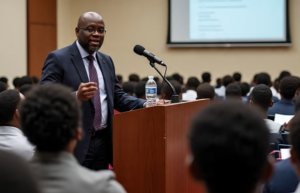Cardiac Arrest: Causes and Prevention.
4 min read
Most cardiac arrests occur when a diseased heart’s electrical system malfunctions. This malfunction causes an abnormal heart rhythm such as ventricular tachycardia or ventricular fibrillation. Some cardiac arrests are also caused by extreme slowing of the heart’s rhythm (bradycardia)

What is the most common cause of cardiac arrest?
Coronary artery disease.
Most cases of sudden cardiac arrest occur in people who have coronary artery disease, in which the arteries become clogged with cholesterol and other deposits, reducing blood flow to the heart
Overview
Sudden cardiac arrest is the abrupt loss of heart function, breathing and consciousness. The condition usually results from a problem with your heart’s electrical system, which disrupts your heart’s pumping action and stops blood flow to your body.
Sudden cardiac arrest isn’t the same as a heart attack, when blood flow to a part of the heart is blocked. However, a heart attack can sometimes trigger an electrical disturbance that leads to sudden cardiac arrest.
If not treated immediately, sudden cardiac arrest can lead to death. Survival is possible with fast, appropriate medical care. Cardiopulmonary resuscitation (CPR), using a defibrillator — or even just giving compressions to the chest — can improve the chances of survival until emergency workers arrive.
Symptoms
Signs of sudden cardiac arrest are immediate and drastic and include: Sudden collapse, No pulse, No breathing, Loss of consciousness. Sometimes other signs and symptoms occur before sudden cardiac arrest. These might include: Chest discomfort, Shortness of breath, Weakness,
Fast-beating, fluttering or pounding heart (palpitations). But sudden cardiac arrest often occurs with no warning.
When to see a doctor. Umuaka Times advises that readers should call for medical help upon noticing the following signs. Chest pain or discomfort, Heart palpitations, Rapid or irregular heartbeats, Unexplained wheezing, Shortness of breath, Fainting or near fainting, Lightheadedness or dizziness.
When the heart stops, the lack of oxygen-rich blood can cause death or permanent brain damage within minutes. Time is critical when you’re helping an unconscious person who isn’t breathing.
If you see someone who’s unconscious and not breathing normally, do the following: Call an emergency medical help. f you have immediate access to a telephone, call before beginning CPR. Perform CPR. Quickly check the person’s breathing. If the person isn’t breathing normally, begin CPR. Push hard and fast on the person’s chest — at the rate of 100 to 120 compressions a minute. If you’ve been trained in CPR, check the person’s airway and deliver rescue breaths after every 30 compressions.
If you haven’t been trained, just continue chest compressions. Allow the chest to rise completely between compressions. Keep doing this until a portable defibrillator is available or emergency workers arrive.
Use a portable defibrillator, if one is available. It will give you step-by-step voice instructions. Continue chest compressions while the defibrillator is charging. When it’s charged, the defibrillator will check the person’s heart rhythm and recommend a shock if needed. Deliver one shock if advised by the device and then immediately resume CPR, starting with chest compressions, or give chest compressions only, for about two minutes.
Using the defibrillator, check the person’s heart rhythm. If necessary, the defibrillator will give another shock. Repeat this cycle until the person recovers consciousness or emergency workers take over.
Portable automated external defibrillators (AEDs) are available in many places, including airports, casinos and shopping malls. You can also purchase one for your home. AEDs come with built-in instructions for their use. They’re programmed to allow a shock only when appropriate.
Request an Appointment at Mayo Clinic
Causes
The usual cause of sudden cardiac arrest is an abnormal heart rhythm (arrhythmia), which happens when your heart’s electrical system isn’t working correctly.
The heart’s electrical system controls the rate and rhythm of your heartbeat. If something goes wrong, your heart can beat too fast, too slowly or irregularly (arrhythmia). Often these arrhythmias are brief and harmless, but some types can lead to sudden cardiac arrest.
The most common heart rhythm at the time of cardiac arrest is an arrhythmia in a lower chamber of your heart (ventricle). Rapid, erratic electrical impulses cause your ventricles to quiver uselessly instead of pumping blood (ventricle fibrillation).
Heart conditions that can lead to sudden cardiac arrest
Sudden cardiac arrest can happen in people who have no known heart disease. However, a life-threatening arrhythmia usually develops in a person with a preexisting, possibly undiagnosed heart condition. Conditions include:
Coronary artery disease. Most cases of sudden cardiac arrest occur in people who have coronary artery disease, in which the arteries become clogged with cholesterol and other deposits, reducing blood flow to the heart.
Heart attack. If a heart attack occurs, often as a result of severe coronary artery disease, it can trigger ventricular fibrillation and sudden cardiac arrest. Also, a heart attack can leave scar tissue in your heart. Electrical short circuits around the scar tissue can lead to abnormalities in your heart rhythm.
Enlarged heart (cardiomyopathy). This occurs primarily when your heart’s muscular walls stretch and enlarge or thicken. Then your heart’s muscle is abnormal, a condition that often leads to arrhythmias.
Valvular heart disease. Leaking or narrowing of your heart valves can lead to stretching or thickening of your heart muscle. When the chambers become enlarged or weakened because of stress caused by a tight or leaking valve, there’s an increased risk of developing arrhythmia.
Heart defect present at birth (congenital heart disease). When sudden cardiac arrest occurs in children or adolescents, it can be due to congenital heart disease. Adults who’ve had corrective surgery for a congenital heart defect still have a higher risk of sudden cardiac arrest.
Electrical problems in the heart. In some people, the problem is in the heart’s electrical system itself instead of a problem with the heart muscle or valves. These are called primary heart rhythm abnormalities and include conditions such as Brugada syndrome and long QT syndrome.





